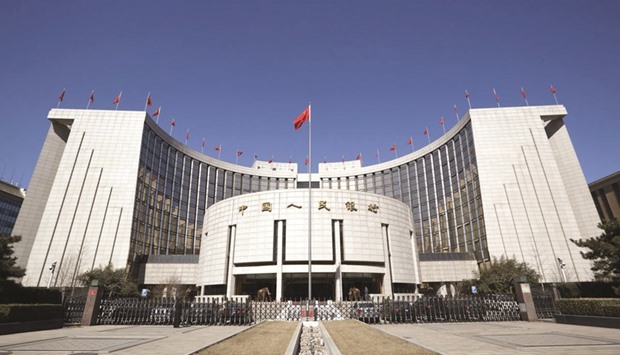China’s banking regulator has sent an urgent notice to banks telling them to clear bottlenecks slowing lending to private firms, sources with direct knowledge told Reuters, highlighting rising concern in Beijing about torpid private investment.
Chinese banks sharply cut new lending in April after a record first-quarter credit spree, much of which appeared to go to the state sector and may have helped inflate asset bubbles in real estate and commodities.
According to the document seen by Reuters, the China Banking Regulatory Commission (CBRC) is requiring financial institutions to conduct checks on their implementation of central government directives intended to make it easier for private firms to access bank credit.
It also tells them to work to resolve any problems in cases where lending support to private enterprise is insufficient, including small and micro-businesses.
The document requires institutions to report their implementation results to the regulator by May 20.
The CBRC did not respond to calls seeking comment from Reuters.
The document also called for banks to reduce costs for short-term credit products such as bridge loans, which private firms rely on to stay afloat through tough business cycles, while examining risk in their loan guarantee businesses.
One of the people with direct knowledge of the order said the important part “is to implement State Council requests and notifications. The key points are areas where policy solutions have not been put into place, or measures have not been introduced, impacting private investment’s stable and sustainable growth.”
A broad measure of investment – fixed-asset investment – by private companies rose just 5.7% in the first quarter from a year earlier, a sharp slowdown from the pace of a year earlier.
In contrast, fixed-asset investment by state-owned firms jumped 23.3%.
Encouraging private investment is crucial for Beijing both because such investment tends to create more jobs and because such firms are seen as more efficient users of capital and more innovative in moving up the value chain.
That is in sharp contrast with the inefficient state-owned sector, which has struggled to produce positive returns on capital invested.
Data shows the proportion of private investment as a share of total social financing rose from 49.8 in 2012 to 64.2% in 2015. The People’s Daily published an interview on May 9 in which it cited an “authoritative person” saying excessive credit growth in China may lead to recession. The article prompted speculation rift is growing within the government about how to best use credit to support growth. There are concerns that a return to state-dominated investment programmes targeting infrastructure and property - like that launched in the aftermath of the global financial crisis - will saddle Chinese banks with even more bad debt.
Meanwhile, China’s central bank said it has not changed its “prudent” monetary policy stance despite a disappointing release of April data showing banks had cut back sharply on new loans.
Banks made 555.6bn yuan ($85.21bn) in net new yuan loans in April, much lower than expected and less than half the 1.37tn yuan seen in March, data showed on Friday. The People’s Bank of China (PBoC), in a question and answer posted on its website yesterday, attributed the slide to seasonal and technical factors, including the fact that the figures don’t include new local government bond issuance to refinance debt previously issued by local government financing vehicles.
“If this is factored in, new loans in April were more than 900bn yuan,” the PBoC said, in answer to a question as to whether the figures indicated a decline in the real economy.
That number would match analysts previous forecasts for April.
However, the bank also pointed to a decline in corporate bond financing, which came in over 500bn yuan less than March – while still up slightly from the same period last year, and noted that banks remain cautious given increased focus on asset quality control.
“On the whole, current financial support to the real economy is still strong,” it said.
“Prudent monetary policy has not changed.”

The People’s Bank of China headquarters in Beijing. The PBoC said it has not changed its ‘prudent’ monetary policy stance despite a disappointing release of April data showing banks had cut back sharply on new loans.


